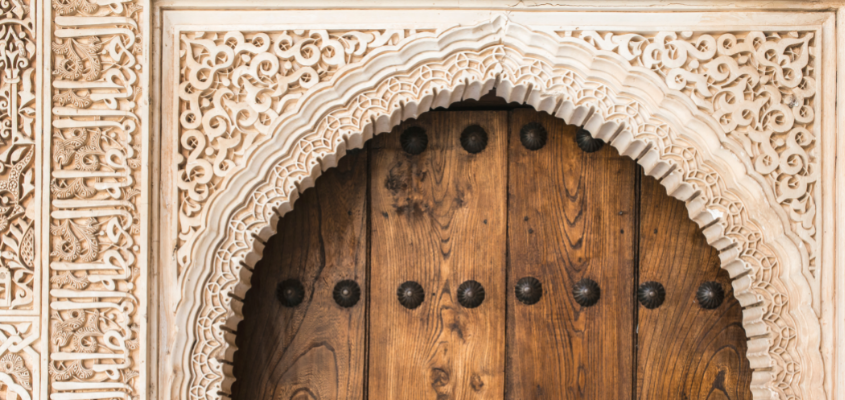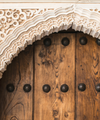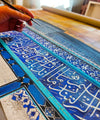Recent Post
Archive
Tags
Custom Menu

Islamic Art Inspirations
Salwa Najm
Jul 29, 2021
The Wazir Khan Mosque
The Wazir Khan Mosque is a 17th-century mosque located in the city of Lahore, capital of the Pakistani province of Punjab. The mosque was commissioned during the reign of the Mughal Emperor Shah Jahan as a part of an ensemble of buildings that also included the nearby Shahi Hammam baths. Construction of Wazir Khan Mosque began in 1634 C.E., and was completed in 1641.
Architecture
The mosque is built on an elevated plinth, with the main portal opening onto the Wazir Khan Chowk. The outer perimeter of the Wazir Khan Mosque measures 279 feet (85 m) by 159 feet (48 m), with the long axis parallel to the Shahi Guzargah.It was built with bricks laid in kankar lime.
Decorative elements
Wazir Khan mosque is renowned for its elaborate embellishment in a style which draws from the decorative traditions from several regions. While other monuments in Lahore from the Shah Jahan period feature intricate kashi-kari tile work, none match the enormous scale of the Wazir Khan Mosque.
Structure
Bricks facing the mosque's exterior are richly embellished with the Persian-style title work known as kashi-kari. Façades facing the inner courtyard are richly embellished with motifs and palette which display strong influences from 17th century Persia.[citation needed] Persian-style colours used include lajvard (cobalt blue), firozi (cerulean), white, green, orange, yellow and purple, while Persian-influenced motifs include star-shaped flowers and grapevines. The mosque also contains motifs of cypress trees, and is the first Mughal monument to have borrowed this motif from Persia.

The main prayer hall is richly embellished with Mughal frescoes.
The façade of the entry portal facing Wazir Khan Chowk is decorated with elaborate tile work and calligraphy that includes verses of the Quran,the sayings of the Prophet Muhammad, prayers for the Prophet, and calligraphic insignias. Above the iwan entrance to the main prayer hall are verses from the Quran's surah Al-Baqara written by the calligraphist Haji Yousaf Kashmiri.

Frescoes
Unlike the contemporary Shah Jahan Mosque in Sindh, the interior walls of Wazir Khan Mosque are plastered and adorned with highly detailed buon frescoes. The interior decorative style is unique for Mughal-era mosques, as it combines imperial Mughal elements with local Punjabi decorative styles. The main prayer hall contains a square pavilion over which the mosque's largest dome rests - a Persian form known as Char Taq. The underside of the dome feature frescoes depicting trees in pairs, pitchers of wine, and platters of fruit, which are an allusion to the Islamic concept of Paradise.
Architectural embellishments
Several archways in the mosque are decorated with muqarnas.
The arched niche at the mosque's entrance facing Wazir Khan Chowk is richly decorated with floral motifs, and features one of Lahore's first examples of a muqarna - an architectural element found at the Alhambra in Spain, as well as on several imperial mosques in Iran. The low domes over the prayer hall reflect the style of the earlier Lodi dynasty, which ruled Lahore prior to the Mughal era.





